BURNING QUESTION: IS FIRE COLLEGE REALLY ‘FOR SALE’ OR JUST UNDER MORE ‘REVIEW?’
Mark Clairmont | MuskokaTODAY.com
GRAVENHURST — Judy Humphries admits she has a “bias” toward the former Ontario Fire College.
A fire research librarian for 20 years before it closed in 2021; she called it her “dream job.”
With deep-seated working knowledge — and as the town’s archivist and member of the Municipal Heritage Committee (MRC) — she recently set about filling in a questionnaire for Infrastructure Ontario on the “heritage value” of the site of “the first free sanatorium treatment centre for tuberculosis in the world.”
“Now when you digest that…,” she told Rotarians last week, it’s really difficult to quantify its impact on Gravenhurst as the province is suspected to be in the throes of prepping it for sale.
Much the same as it’s oft done since 1993 when it closed the neighbouring Muskoka Centre — site of Canada’s first sanatorium.
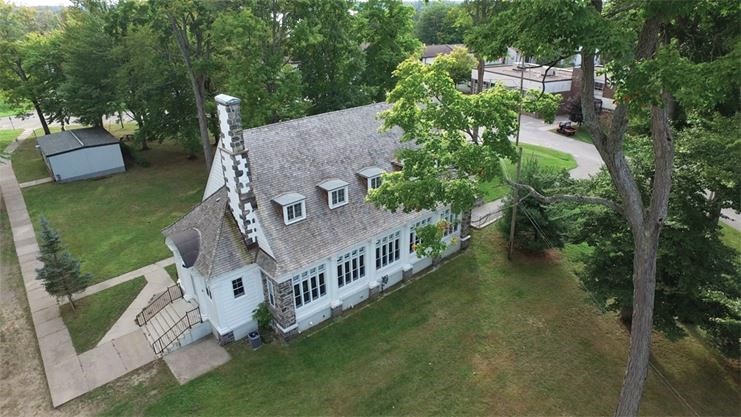
Surprisingly the fire college property at 98 acres is larger than the 71 acres (27 usable buildings) of the Muskoka Centre; with the former 2,000+ feet of shoreline and the latter peninsula 6,570 feet (15 buildings “beyond repair or use”).
That’s 169 acres of prime Muskoka shoreline (8,570 feet+) the province is sitting on and could have for sale in Gravenhurst.
Humphries is “well aware of tuberculosis,” having lost her grandmother and three great aunts to TB around the turn of the 20th century when the Muskoka Free Hospital opened in 1902.
Speaking of the closed college, she said: “If you haven’t driven by it — barred and gates as it is now — you really ought to.”
It’s not just a little cluster of buildings at the top, she said.
“In fact it’s up at the top, down at the bottom (Lake Muskoka). It’s 27 buildings. And it’s a huge property … with five buildings that go back to that time period when it was a free hospital.
“And the one that is most important to me — absolutely resident in my heart — is Massey Hall or Scott Hall.
“If you can drive out there, drive past Scott Hall (the striking white building at the entrance). People look at it — and to my mind there is no question about it, I am biased galore — it is the most beautiful historic building in Muskoka.
“If you go inside that building it has really not changed since 1914 when the Massey family paid to build it. It was built by our own local craftsmen. It was built by carpenters, stonemasons and so on from Gravenhurst. People who lived on my street.
“That building is absolutely precious. When you go in there and you take a look at the interior — which you can’t do now of course — the wood is phenomenal. The ceiling is absolutely to die for. The whole building is right from 1914 when it was built by Chester Massey’s family. The Massey family had lost a son to tuberculosis, so that gave them part of the impetus for building and contributing as much as they did to the care of TB patients.
“So that’s the building that worries me, scares me to death. Because given what’s happening in Ontario to heritage buildings, that thing could go in a second. It could go in a heart-beat. It isn’t protected in the way that you and I might like to think of protection. Because protection is only as good as surveillance.
“We’ve already in Gravenhurst lost two buildings that were protected by bylaw — and were designated. So you can designate the heck out of anything you want, but when somebody gets in there in the dead of night and tears the place down, it’s gone. And that’s the end of it — it’s as simple as that.
“So I am worried about what’s going to happen to Massey Hall,” which had its name changed to Scott Hall in 1962 in “honour” of William Scott, Ontario’s second fire marshal.
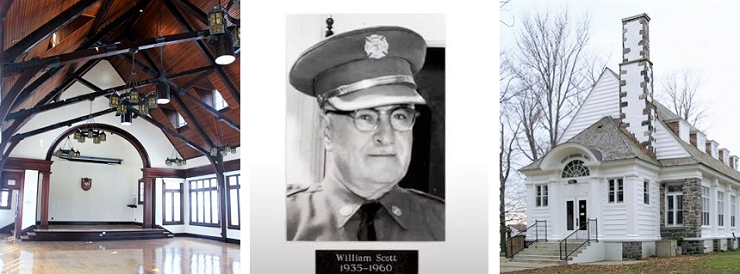
He’d advocated for the creation of the fire college when after the Second World War he “recognized the very frightening reality of hazardous materials like radioactive materials that were starting to be transported across the Canada by truck and train” and saw the need to train the fire officers who manage fire scenes, Humphries said.
“He said ‘Oh, boy! All we need is for an accident by one of those and we’re going to have radio active material all over the place.
“W.J. Scott was the man who said fire departments have got to be trained. They have got to receive really, really good training. Not firefighters. He wasn’t talking about them.”
Humphries said there’s a longstanding misconception about the OFC — “even though I keep saying this at the top of my lungs.
“The Ontario Fire College was meant to train officers. It’s a whole different story about a fire officer and a firefighter. One is a hands-on and the other is the person who calls the shots. And so a fire officer is managing a corporation, which a fire department really is, particularly if you’re not talking about a tiny village. But even in Gravenhurst it is a small corporation. … All kinds of stuff to manage.
“Fire managers also have to manage a fire scene. When they get to a scene and they have a huge fire going on, they’re the ones who call the shots. They tell the firefighters what to do, where to go. How to deploy, what to use. And they’re constantly moving that response forward so it doesn’t spread.
“Fire officers are prevention officers who educate us about fire safety. They’re the people who tell us how many smoke alarms we ought to have in our homes, how many carbon monoxide detectors to have in our home. They plan for children to be safe in our homes and hotels. So this is the kind of training W.J. Scott had in mind.
“He had international status and was the Canadian representative to NATO, following the Second World War, to the civil defence group when it was the name of the game. He was the only foreigner — non-American — invited to the first test of the atomic bomb in a Nevada desert. He saw first-hand what could happen if some of these things were unleashed. He was a man to reckon with.”
In 1949 Scott got premier Leslie Frost to enshrine it in legislation; and with TB on the wane convinced the government to buy the Lake Muskoka property from the sanatorium association in 1957.
“The first course had people from all over the world come and learn how to deal with hazardous waste and radioactive material and taught by instructors from England.”
Scott Hall was named after him when he died of a heart attack in 1960 while packing for his next trip to NATO.
“So they felt it was important that building be named in his honour,” Humphries said.
“If you went in there today you’d look around and be aghast, because it is absolutely beautiful. And I’m terrified that building will perhaps fall into the hands of someone who will say, ‘Hmm, garbage. Heritage.’ I think it can happen.”
‘Under review’ or ‘Under negotiation’
Humphries said of all the surplus government properties Infrastructure Ontario has listed “almost all of them say pretty much ‘under review.’ There’s no price tag on any of them.” Or “if they don’t say under review, they say ‘under negotiation,’ which means there’s an offer in and they’re looking at it. Or they ‘sold.’ So everything says under review.
“So don’t let that fool you when you see it. It simply means they’re waiting for the right offer to come and then it will be gone.”
Infrastructure Ontario contacted Archaeological Research Associates of Ontario (ARA), a private company, to learn more about the property (as if they didn’t know) before they decide to sell it. ARA contacted the Archaeological Conservancy of Ontario (ACO) through the Muskoka division and said “tell us everything you can and fill in our survey about the Ontario Fire College.
“And of course they said ‘what’s that?’ They had no idea. They’re not resident of Gravenhurst. They’re not resident in this part of Muskoka. So in fact they had no idea.”
In turn the conservancy group contacted Gravenhurst’s heritage committee, of which Humphries is a member. They asked her to fill in the survey, as she’s done a number of talks about the OFC.
If you want to see a great tour of the fire college, go here to Youtube for one of her hour-long archives talks and see “every building and what it does, what is used for. It’s really worth viewing.”
You can also just Google Ontario Fire College and Judy Humphries.
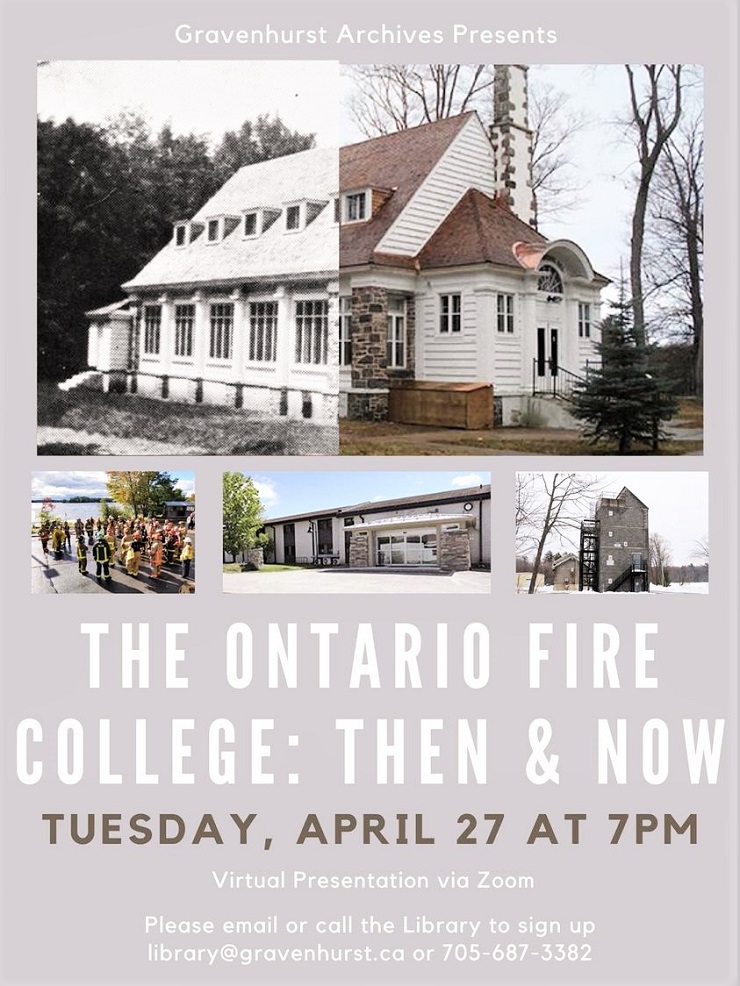
“Because until you see something like that you have no idea of the extent of it,” she said.
Humphries found the ARA survey “fascinating,” but had to call them twice to understand what they wanted.
“Are you really serious?” she asked when she thought they just wanted “my personal opinion on the heritage value of this heritage property. “How would I answer that? The dollar value?”
Other questions were “why is they place important and unique?” She said she pretty much filled out the same answers twice.
“To me it was so subjective. I thought who are they giving this to? Because if they’re checking off boxes, you’d rather hope the boxes they had would have something to do with the importance of the property.”
Humphries asked rapt Rotarians: “If I handed it to you and asked you the unique qualities of the Ontario Fire College, could you do it? No!
“It went to all kinds of people who couldn’t do it. They would have no idea.”
She said she’s spoken to a couple of different groups in Bracebridge and “they didn’t even know it existed. And that’s not a surprise.
“It existed for all those years (1958-2021) until it was closed. All those years with thousand and thousands and thousands of men — and then women — coming to be trained as fire officers. And then in the summers recruits coming to be trained as firefighters on the grounds, which is what cottagers would see with the big sprays of water, the smoke going up. But it was really the fire officers that mattered.”
Humphries continued, saying she didn’t know which boxes were being checked off by Infrastructure Ontario, “but I fear that they’re boxes that make absolutely no sense or are irrelevant to anything, because they are being filled in by people who haven’t any clue what the value of the Ontario Fire College is.”
She said “at this point I am fearful.”
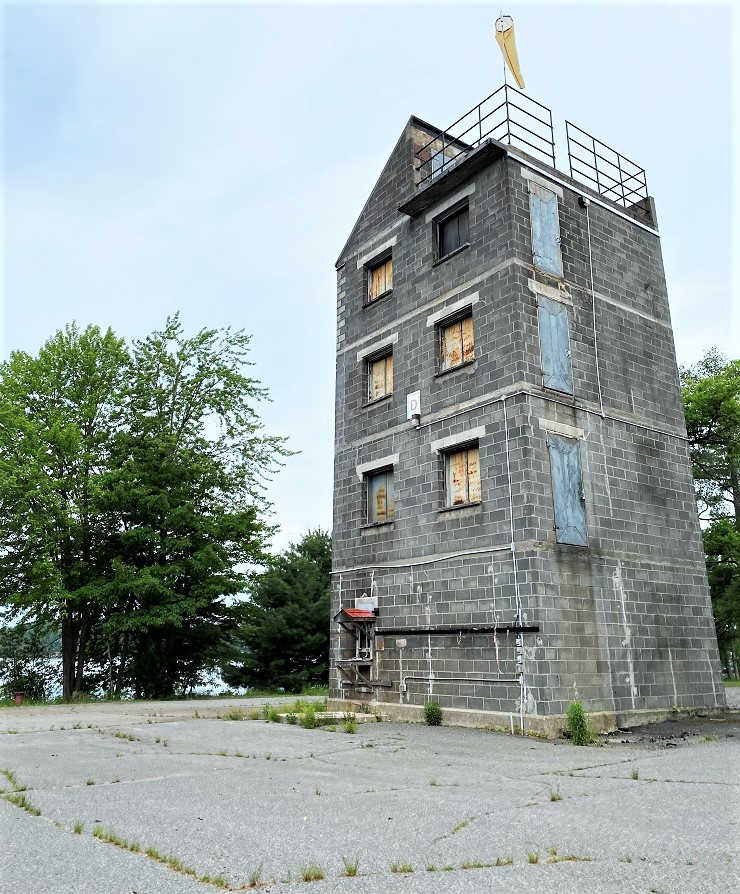
‘Cover with condos, tear down anything in way’
After the college closed two years ago Humphries corresponded with former principal Bernie Moyle, the last of five fire marshals she worked for. She said he told her: “Well, you what’s going to happen, Judy, is they’re going to cover it with condominiums and tear down anything that gets in their way.
“And that, I’m afraid, is going to happen,” Humphries said with a sigh.
She can’t believe it, not after the province a year before it closed “completely refurbished 100 rooms in the residence in which nobody ever slept.
“Those rooms, 100 rooms, new beds, new flooring, new curtains, new desks, new chairs, new lamps. And individual air conditioning units in every room. I think only two or three of them were every slept in until it was closed.
“And it was closed, to my mind, on a whim. That’s how easy our history and our dollars disappear.”
She said the OPP were given full rein to take what they wanted to refurbish all their training facilities across Ontario, including in Orillia at the former Huronia Regional Centre where canine courses continue across the road from the OPP headquarters.
For the former worker who got to watch the Segwun pass by her windows every day the closing is a travesty.
Especially the potential loss of her invaluable collection of fire knowledge, some 18,000 volumes she compiled over two decades.
“I couldn’t even get an answer for a year and a half after it closed. Nobody could tell me where my library went. I was sick. I hear it’s in boxes in one of the regional offices. It doesn’t make me happy. But at least it makes me think that some of it wasn’t thrown out. But I doubt it.
“So I’m bringing you a really sad story.”
Asked what people can do, Humphries referred to Moyle: “If he feels he can’t do a thing, and he’s got more contacts than you can even imagine, I don’t know what we can do.
“I keep saying if I talk about this place often enough, I might find somebody who might have the ear of the premier and can say ‘for heaven’s sake don’t let this happen.’”
Humphries said she was “almost in tears” a week after it closed, but has since “reconciled” that now.
Within a week she was talking about it.
She said there is no replacement facility for continued officer training, although there are about 22 regional centres where firefighter courses are offered around the province and online.
A college alternative is to offer officer training at a university, some of which had partnerships along with universities and colleges for inter-recognition of courses.
As for the original buildings on site, the fire instructors’ house (where doctors once lived), and the principal’s residence (where the chief doctor lived before moving offsite) have either been modified beyond recognition or have been “let slide so badly” as to look like the dilapidated state of the Muskoka Centre due to mould. Three other utility buildings also now have no historic value left in them.
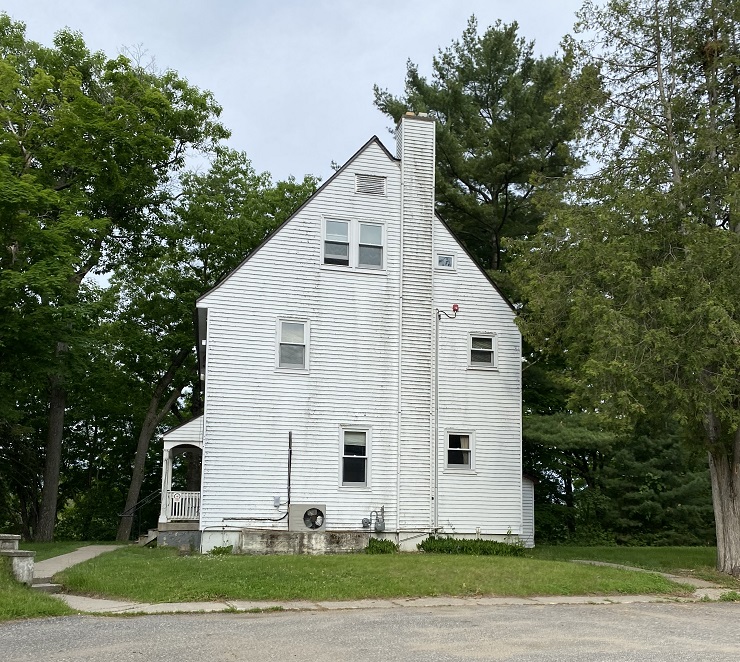
Rotarian Ken Little thanked Humphries for her presentation and noted his efforts with several others who tried to help keep alive the Muskoka Centre. He, too, lamented the fate that may befall the fire college.
Both properties, he said, are strategically and historically linked.
“You have a great supporter here. And it bothers me that this could possibly go the way that it could go.”
He remembered he and others from town meeting with the Ontario Realty Corp. after the Muskoka Centre closed 30 years ago and an ORC vice-president saying “he couldn’t understand why the town didn’t make overtures to acquire it, ‘because we would do whatever we could do to help you.’
“And the town did nothing to acquire it.
“Now I am going back a few years, I know. But that property is so valuable to us. And to put housing on that would be just a very, very disgraceful thing. And it’d be the same thing that’s going to happen with the fire college.
“So I hope that some point in time you’re able to gather a group of people of some influence to make sure that it’s protected.”
“I’m doing my best,” concluded Humphries. “I speak about this thing everywhere and all the time. And tell people (her) talk is available on Youtube, because it gives people who know nothing about it something to actually chew on, think about and see.”
Is it time for a public rally and march between two sites?
$700,000 for rural firefighter training
This morning the province announced $700,000 to support four free training projects for Ontario firefighters.
Premier Doug Ford said it will focus on fighting fires in hazardous situations for small and rural services and help ensure over 200 professional and volunteer firefighters around the province are equipped and prepared for ground rescue and wildfire scenarios. He says there will also be courses for automobile extraction, boating and water safety, and elevator rescue.
In addition, Ford says in recognition of the mental toll firefighting comes with, the funding will contribute to peer support training for suicide awareness and crisis intervention.
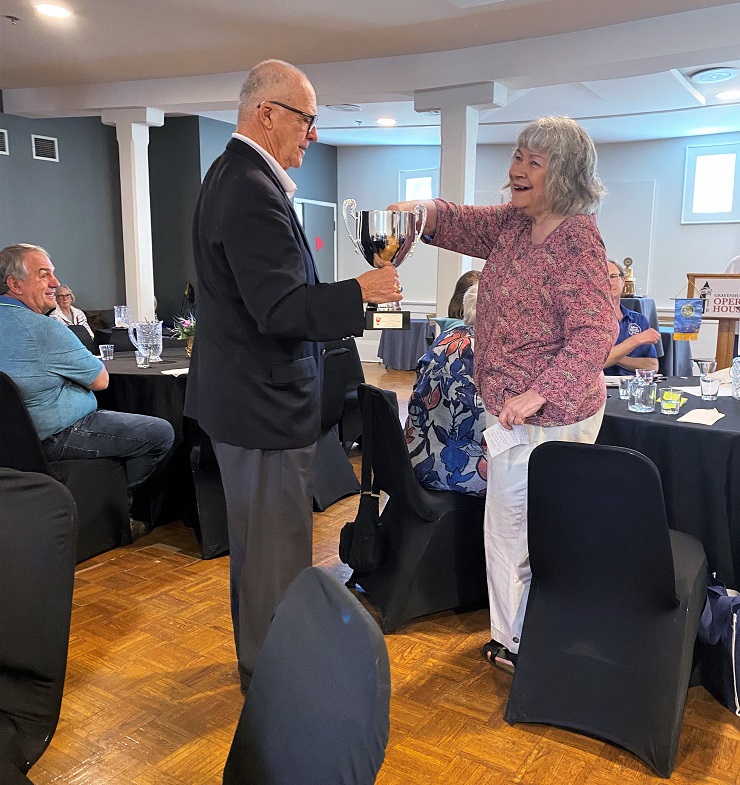
EMAIL: news@muskokatoday.com
29 years of ‘Local Online Journalism’
Twitter: @muskokatoday, Facebook: mclairmont1
Leave comments at end of story
SUBSCRIBE for $25 by e-transferring to news@muskokatoday.com
Or go online to https://muskokatoday.com/subscriptions
